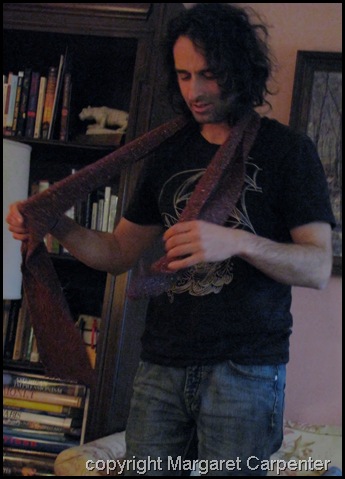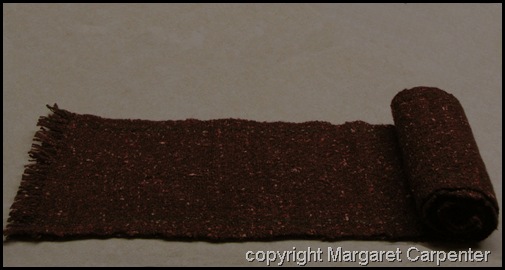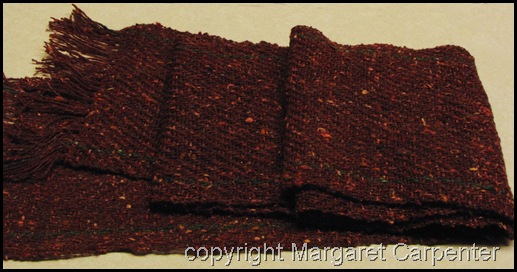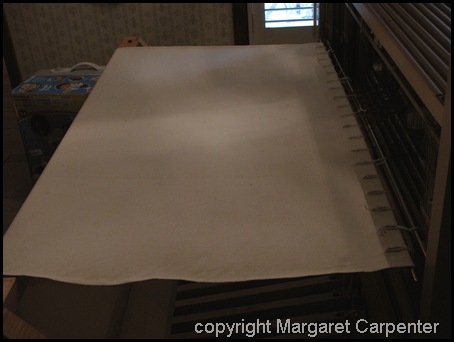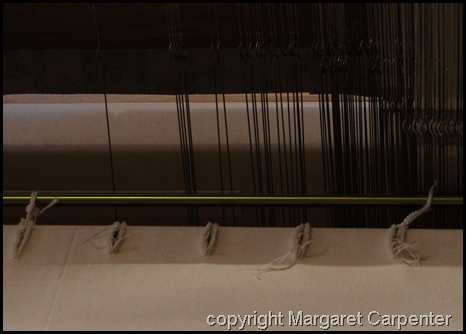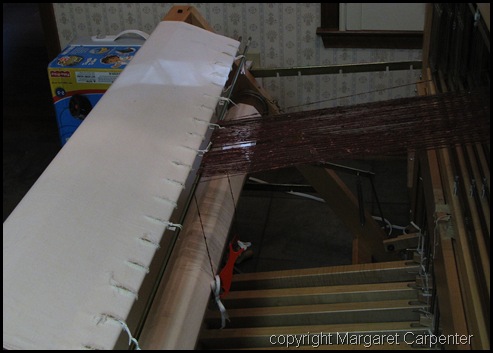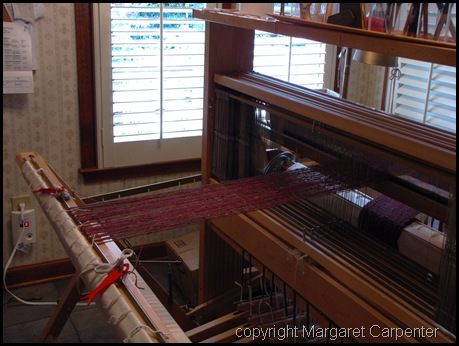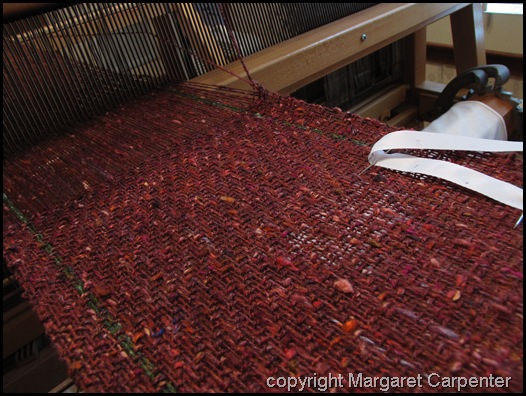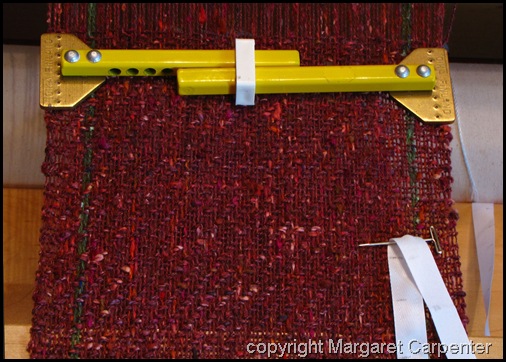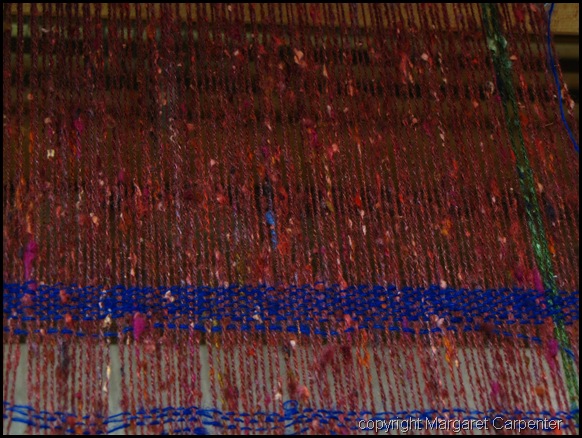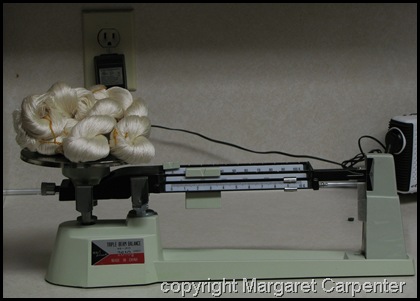Posted by Peg in South Carolina
WET FINISHED BY HAND
In the first set of images, the sample has been soaked for one hour in hot soapy (Johnson’s Baby Shampoo) for one hour, then massaged or otherwise tortured by hand for about three minutes. The second image is a detail view.
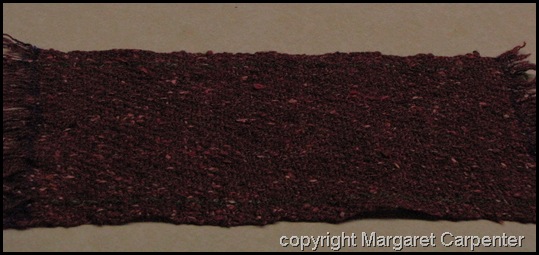
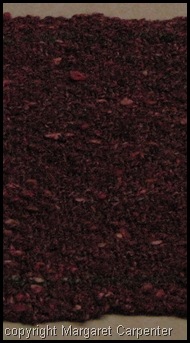
The width has stayed the same: 7”
The length has shrunk from 15” to 12”
The sample has lost some of the fragility it had when it first came off the loom. But it is still quite delicate and soft. Very feminine in its delicacy. It needs to be washed again since this is to be a present for a man.
WET FINISHED IN THE WASHING MACHINE
The next set of images shows the sample after it has been washed by machine in hot water with Johnson’s Baby Shampoo for four minutes. I put it in a nylon lingerie bag.
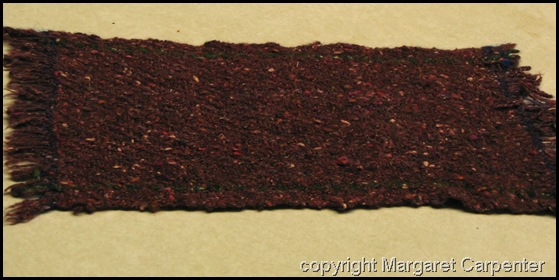
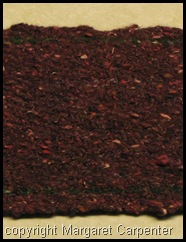
The width has now drawn in to 6.25”
The length has shrunk down to 10.75”
The sample is still a bit delicate, but not at all fragile. The fulling process has thickened it up just as bit, as well as softened the fabric. I would be tempted to try fulling it just a bit more, but then I think it might start getting thicker than I want. Plus it would be getting way too narrow.
Based on the on loom measurements (7” x 15”), this represents a widthwise loss of roughly 10% and a lengthwise loss of approximately 22%. This means that, should I wash the scarf itself for the same amount of time, its length would shrink from from 88” (measurement on the loom) to roughly 68.5”.
The lengthwise shrinkage is in reality not that much. The drop of 3” in length of the warp represents simply that the yarn was stretchy and stretched quite a bit as I beamed it on. Likewise the length of the scarf off the loom went from 88” to 78”.
I had anticipated this kind of shrinkage from the beginning. Even when I wound the yarn on the warping board, it snapped back probably about 5” after I removed each bout.
Related Post: Winding the Handspun Warp
"Sample Wet Finished” was written by Margaret Carpenter for Talking about Weaving and was originally posted on December 13, 2009. ©2009 Margaret Carpenter aka Peg in South Carolina.

